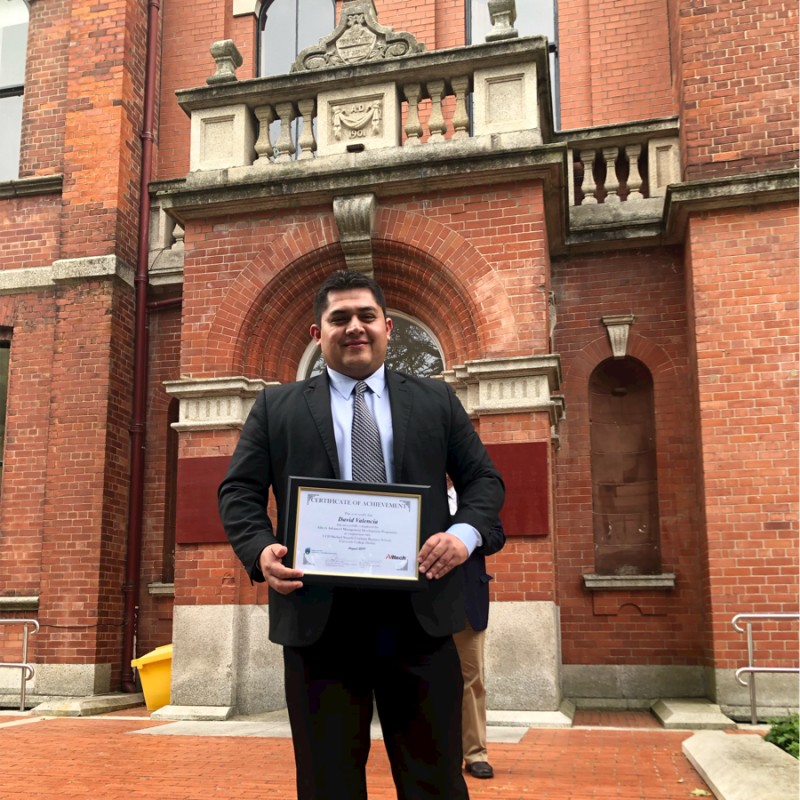Interpretive, Interpersonal, and Presentational Modes of Communication
Exploring Culture
Being a part of a global company’s engineering department I have great exposure to many countries’ cultures, specific to Latin America these would be Venezuela, Mexico, Honduras, and Brazil. In my company our focus is on the fact that our culture and the talent of our people are strategic contributors to our success, so becoming more than coworkers, becoming friends, and being able to share our personal experiences has driven my exposure tremendously. Here is my coworker from Venezuela, David!
It is exciting that he has now moved to the Nicholasville, KY and is in the office next to me!

Engaging in Communities
Engaging in your local community is very valuable. Understanding the individual wants and needs of your peers helps you to make informed and influential decisions that empower the group as a whole. This is just as important in the global community as well, understanding the cultures that individuals come from. Again, working at a global company with deeply connected lets me see both sides of the local/global aspects in one place.
In this class, we have had to do much research lead through Contraseña. We have learned the personalities and activities of 33 individuals (cultural collaborators).
Cultural_collaborators_FinalInterpersonal Communication
In this class we have had to communicate entirely in Spanish through multiple forms such as: written discussion boards, interpersonal 1-on-1 conversations, and using the voice thread tool to show progress through oral recordings. Advancing from SPAN 101 we utilized a new tool: TalkAbroad which let’s you buy conversation time with people in other countries. I had two great conversations, one with Patricia Novoa from Venezuela about our families, and another with Ximena Meza from Ecuador about our health and wellbeing, and the foods we eat to support that.
The discussion board posts are good for practicing topic vocabulary and proper accent placement and typing proficiency in Spanish. Outside of class I try to order things in Spanish when I dine at Mexican restaurants. My main flaws are SER and ESTAR and trying to frame Spanish sentences like English ones. noun-adjective vs adjective-noun and other orders.
Presentational Speaking
Throughout the course we had multiple live conversations and conversations prepared with Flipgrid with the instructor to present how we could introduce ourselves, pronounce words, and engage in typical conversations related to the modules we were working on. Here they are:
Presentational Writing
In English, give a very brief 2-3-line description of the presentational communication of compositions, pamphlets, blogs, flyers, stories, articles, and any other written presentation activities you completed this semester inside or outside of class for or related to your Spanish learning. Include a copy of a written presentational activity you produced? (See Modes of Communication link for description and examples).
Then, in a paragraph, write a reflection that includes each of the activities you described above in which you explain how you have grown with each assignment or activity. What became easier and what was difficult? How did you overcome the difficulties? What did you excel at and why? How could you do better next time?
Interpretive Listening
During the semester, most of my interpretive listening has come from music with some from videos. Listening to music and reading the lyrics once, then focusing on the song allowed me to develop in this way the fastest. I like to sing along with the song linked below.
Along with these songs, we have a weekly Spanish class at work where we listen to an instructor and view various videos.
Interpretive Reading
All of my Interpretive Reading for my first semester came from the Contraseña program. Many of the assignments would be in long format with large sections missing and you would have to interpret what the persons involved were saying and fill in the blanks. I like this because it was graded and had multiple submissions available for practice.
This taught me how much easier it is to read rather than write and speak Spanish, there are many cognates that we draw upon to quickly build our Foundational Spanish.